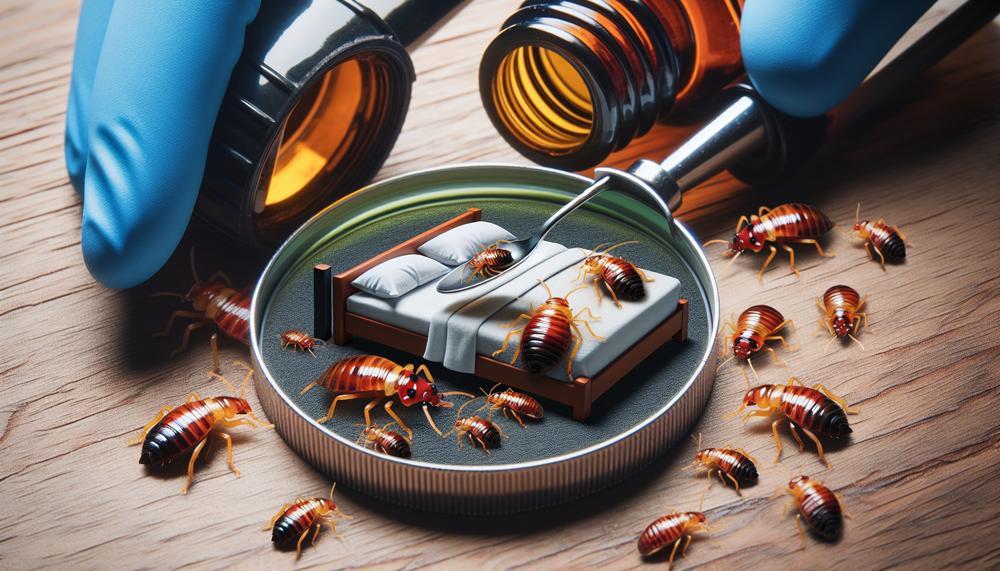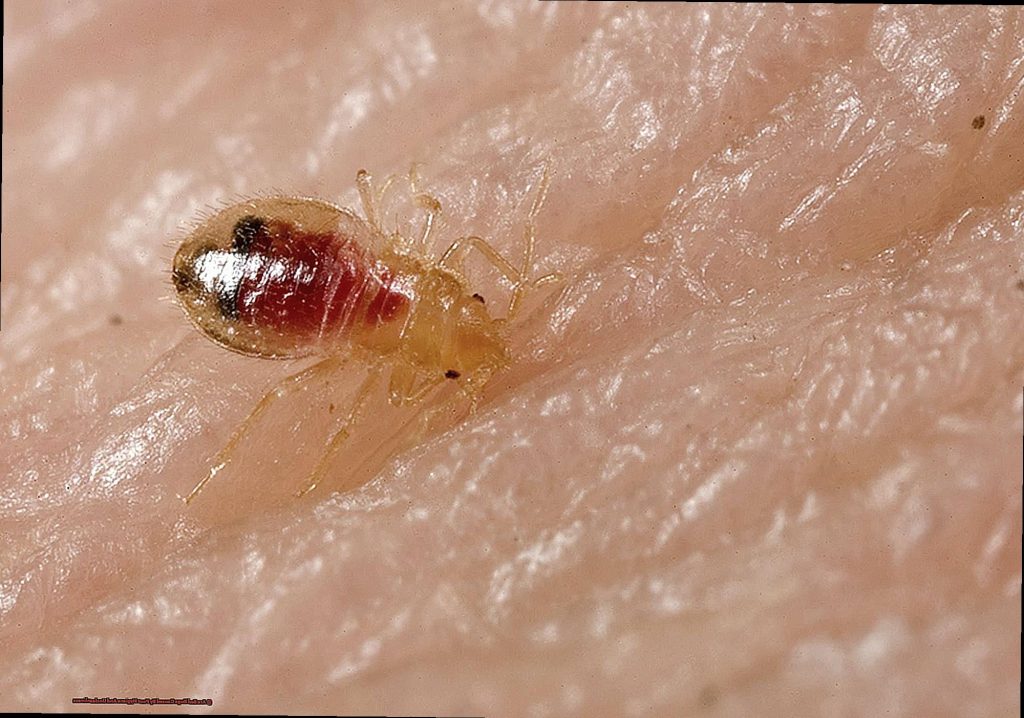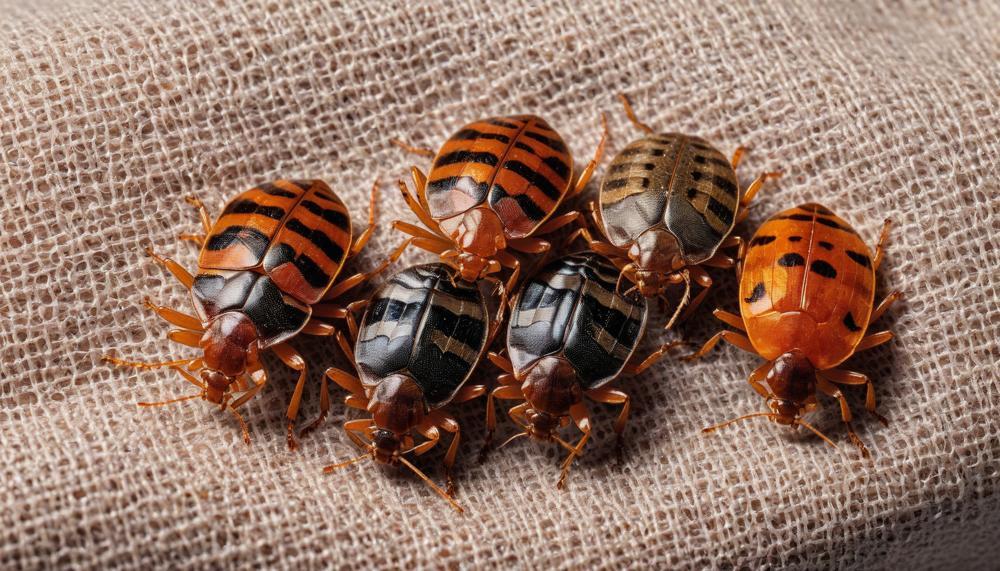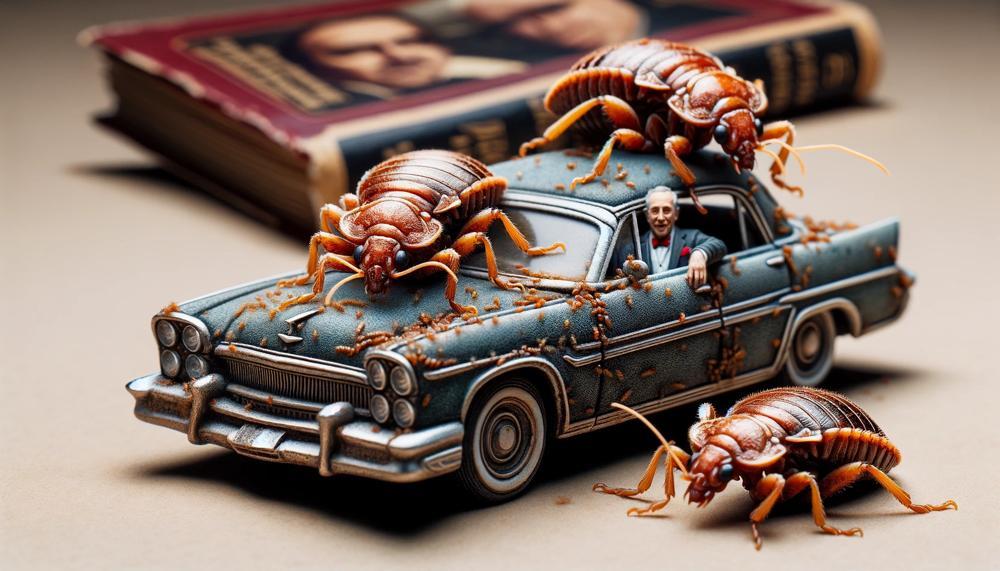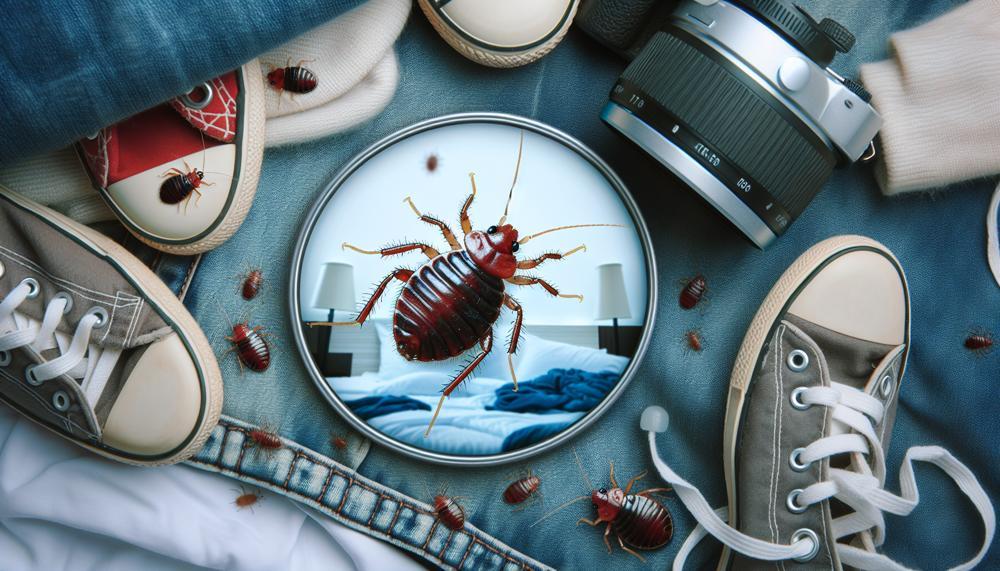If you have ever encountered these insidious creatures, then you are well aware of the frustration and persistence they bring. From their bites that leave you scratching for days to the arduous process of getting rid of them, bed bugs can be a nightmare for anyone.
That’s where permethrin comes in – a commonly used insecticide that has been hailed as one of the most effective solutions for eliminating bed bugs. But is it truly as powerful as people claim?
So, pour yourself a cup of coffee and let us explore this topic together.
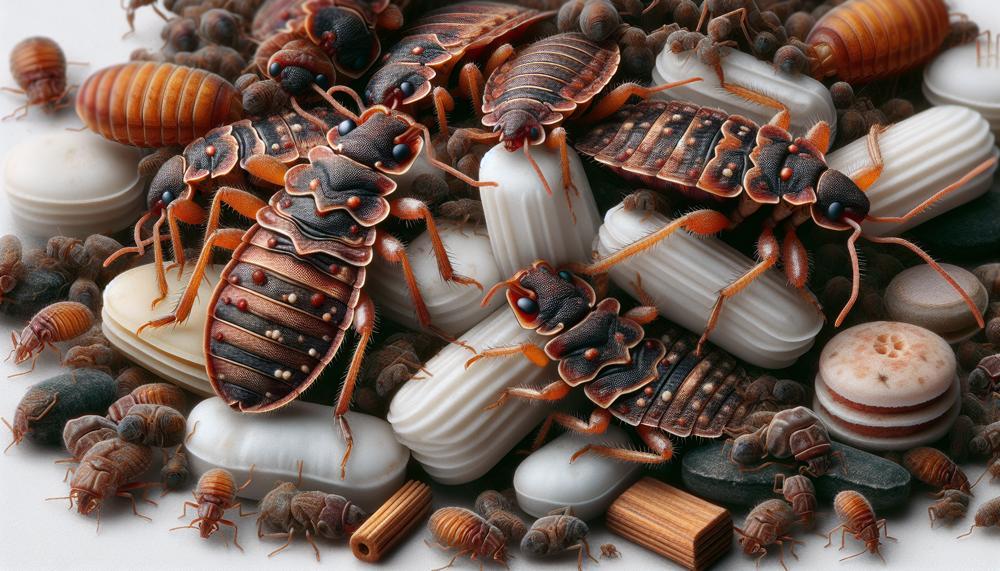
Table of Contents
- 1 Understanding Permethrin: What is it and How Does it Work?
- 2 Does permethrin kill bed bugs?
- 3 The History of Permethrin: From Agriculture to Pest Control
- 4 The Dangers of Permethrin: Toxicity to Fish and Aquatic Animals
- 5 Human Exposure to Permethrin: Potential Side Effects and Precautions
- 6 Forms of Permethrin: Sprays, Creams, and Pre-Treated Clothing
- 7 How Does Permethrin Work on Bed Bugs?
- 8 Is Permethrin Safe to Use Against Bed Bugs?
- 9 How to Use Permethrin to Kill Bed Bugs
- 10 Alternatives to Permethrin for Bed Bug Control and Prevention
Understanding Permethrin: What is it and How Does it Work?
If so, know that you are not alone in this daily struggle. These minuscule creatures have become a commonplace nuisance in households, and their adeptness at hiding in small spaces can make eradication a daunting task.
But do not despair, there is a remedy – Permethrin. Here, we will delve into this potent insecticide and its mechanism for controlling bed bugs.
What exactly is Permethrin?
Permethrin is a man-made insecticide that falls under the pyrethroid family. Originally utilized in agriculture back in 1972, it has now found its way into pest management products. It mimics the natural extracts found in chrysanthemum flowers, making it a highly effective alternative to conventional pesticides.
How does Permethrin function?
As a broad-spectrum insecticide, Permethrin has the ability to effectively exterminate a wide range of insects. When directly applied to bed bugs, it impacts their nervous system, causing paralysis and eventual fatality. However, what sets Permethrin apart from other insecticides is its added capability of targeting bed bug eggs and nymphs.
Permethrin contains an insect growth regulator known as Hydroprene, which impedes the development of eggs and nymphs into adults. This makes it a successful solution for controlling bed bug populations that have developed resistance to traditional methods.
Does permethrin kill bed bugs?
Absolutely! Permethrin does kill bed bugs, and it’s quite effective at that. You might want to kill these tiny pests on contact or prevent them from hanging around your humble abode.
The History of Permethrin: From Agriculture to Pest Control
For centuries, bed bugs have been a thorn in the side of homeowners and travelers, causing headaches and discomfort. These tiny, blood-sucking insects have become a major nuisance, known for their elusive nature and resistance to traditional insecticides.
However, thanks to the development of permethrin, a potent insecticide, getting rid of these pesky pests has become much more manageable.
The journey of permethrin began in the 1970s when it was first concocted by the United States Department of Agriculture (USDA) as a synthetic alternative to pyrethrin, a natural insecticide extracted from chrysanthemum flowers. While pyrethrin had been used for centuries, its effectiveness was limited and not suitable for large-scale agricultural use.
To address this issue, scientists created permethrin, a member of the pyrethroid family, which are synthetic versions of pyrethrin.
These chemicals are stronger and longer-lasting, making them highly effective against a wide range of agricultural pests such as aphids, thrips, and mites.
The Dangers of Permethrin: Toxicity to Fish and Aquatic Animals
Permethrin, a potent synthetic insecticide, has quickly become a popular choice for pest control in recent times. Its unparalleled ability to eradicate bed bugs and other insects has made it a favored option among individuals and industries alike.
However, as effective as it may be, permethrin poses a grave danger to fish and other aquatic creatures.
The main reason for this danger lies in the way permethrin works. As an insecticide, it targets the nervous system of insects, causing paralysis and death. Unfortunately, this same mechanism also affects non-target species like fish and other aquatic animals when they come into contact with the chemical.
When permethrin enters water bodies, it can easily penetrate the gills, skin, or digestive systems of fish and other aquatic creatures. Once inside their bodies, it disrupts their nervous system, leading to paralysis and eventual death. Even trace amounts of exposure can prove fatal for these creatures, with concentrations as low as 0.5 parts per billion (ppb) causing mortality in fish.
Moreover, permethrin also has indirect effects on fish and other aquatic animals through the food chain. As smaller organisms like insects and plankton are exposed to permethrin, they become less available as food for larger species. This disruption in the food chain can have a ripple effect on entire aquatic ecosystems.
It’s not just acute toxicity that poses a threat to fish and other aquatic creatures but also chronic toxicity. Over time, permethrin can accumulate in the tissues of these creatures, causing long-term harm to their health and reproductive capabilities.
This can lead to reduced population sizes and genetic diversity, further exacerbating the impact on aquatic ecosystems.
Furthermore, permethrin doesn’t just harm fish and aquatic animals but also non-target species like amphibians, crustaceans, and mollusks. These creatures play crucial roles in maintaining the balance of aquatic ecosystems, and their loss can have far-reaching consequences.
It is imperative to regulate and use permethrin responsibly to minimize its impact on these vulnerable creatures and the environment. Alternative methods of pest control, such as integrated pest management, should be considered. This approach focuses on using a combination of non-toxic methods to control pests.
Human Exposure to Permethrin: Potential Side Effects and Precautions
When it comes to eradicating bothersome bed bugs, homeowners often turn to the powerful insecticide permethrin. However, while this chemical is effective in eliminating these pests, it’s vital to comprehend the potential side effects and precautions that accompany its use.
Permethrin belongs to the pyrethroid class of chemicals, renowned for their insecticidal properties. Although generally deemed safe for use, human exposure to permethrin can have adverse effects, particularly if used incorrectly.
One of the primary concerns with permethrin is its propensity to irritate the skin and eyes. Direct contact with this chemical can result in skin irritation, including redness, itching, and burning sensations. Exposure to the eyes can cause redness, pain, and temporary vision loss. These side effects can be amplified for individuals with sensitive skin or allergies.
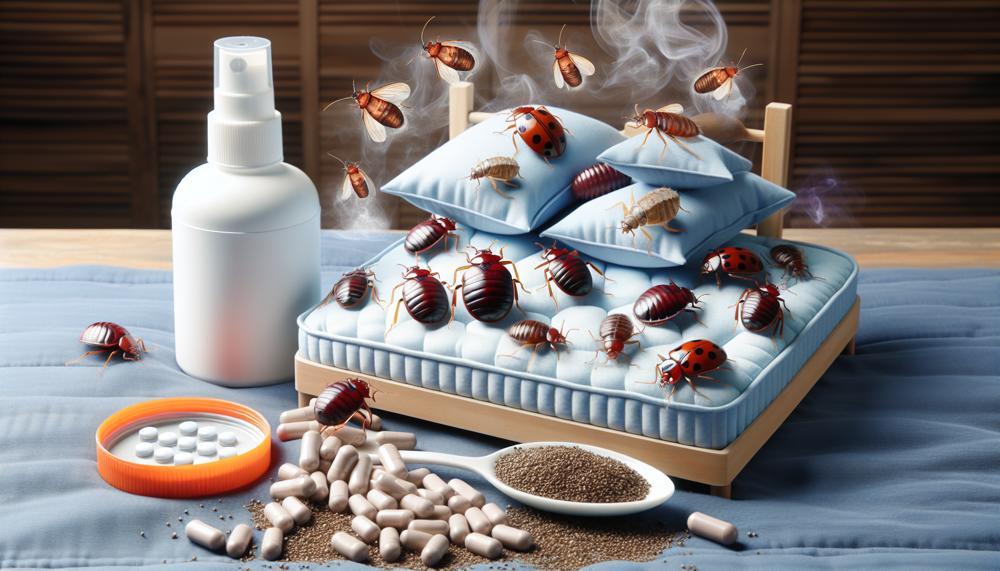
In addition to skin and eye irritation, permethrin can also impact the respiratory system. Inhaling high levels of this chemical can lead to coughing, wheezing, shortness of breath, and chest tightness. This poses a significant risk for people with asthma or other respiratory conditions.
To minimize the likelihood of experiencing these side effects, it’s critical to take necessary precautions when using permethrin to eliminate bed bugs. Here are some essential measures to keep in mind:
- Use protective gear: It is essential to wear protective gear such as gloves, goggles, and a face mask when handling permethrin to avoid direct contact with the chemical.
- Avoid skin contact: If handling permethrin directly is unavoidable, ensure there is no contact with your skin. In case of accidental exposure, wash the affected area thoroughly with soap and water.
- Wear appropriate clothing: During application, wear long-sleeved shirts, pants, and closed-toe shoes to limit skin exposure.
- Avoid inhalation: When using permethrin spray, do so in a well-ventilated area. Consider using a fan or opening windows for proper air circulation.
- Wash exposed skin: After using permethrin, wash any skin that may have been exposed to the chemical with soap and water to remove any residual substances.
Forms of Permethrin: Sprays, Creams, and Pre-Treated Clothing
Bed bugs are the bane of homeowners and wanderers alike. These minuscule parasites can swiftly infiltrate your abode and inflict itchy, irksome wounds that can develop into a full-blown invasion if not handled with care. But fret not, for the potent pesticide, Permethrin, is here to purge your dwelling of these vexing intruders.
Permethrin manifests in three primary forms: fumigants, ointments, and impregnated apparel. Each variation boasts its own distinct advantages and applications in the combat against bed bugs.
- Fumigants: The most prevalent preference for fighting bed bugs is Permethrin fumigants. They are available in both gaseous and liquid states and can be applied on surfaces where bed bugs may be lurking, such as bedding, rugs, and furnishings. When directly sprayed onto bed bugs, Permethrin disrupts their nervous system, inducing paralysis and ultimately leading to their demise within minutes.
- Ointments: For treating bed bug bites on the skin, Permethrin ointments are the go-to solution. These balms contain a lower concentration of Permethrin compared to fumigants, making them safe for dermal use. They function by numbing the bitten area and providing relief from itching and irritation.
- Impregnated Apparel: For frequent globetrotters or those exposed to bed bugs in public spaces, impregnated apparel offers a convenient alternative. These garments are doused with Permethrin during production, making them impermeable to bed bug bites for up to 70 wash cycles. This iteration of Permethrin is especially advantageous for preventing bed bug invasions in your residence.
Despite its effectiveness in eradicating bed bugs, some factions have developed resistance to Permethrin. Therefore, it is crucial to combine Permethrin with other pest control methods for optimal outcomes.
How Does Permethrin Work on Bed Bugs?
Permethrin paralyses and kills bed bugs by disrupting their nervous systems. It works rather swiftly, and you can expect to see dead bed bugs within 24 hours of treatment.
Is Permethrin Safe to Use Against Bed Bugs?
For the most part, yes, permethrin is pretty safe. It is available as a spray or dust, and it’s specifically designed to target and kill insects. Here are some precautions you should take when using permethrin:
- Make sure you read and follow the directions on the product label carefully.
- Wear gloves and a mask when applying permethrin.
- Do not apply permethrin directly to your skin or pets.
- Keep permethrin away from children and pets.
How to Use Permethrin to Kill Bed Bugs
- Move all bedding, furniture, and other items away from the walls.
- Vacuum the area thoroughly.
- Apply permethrin to the infested areas according to the product label. Be sure to cover all cracks and crevices.
- Let the permethrin dry completely before moving furniture and belongings back into the area.
- Repeat the treatment in 7-10 days if necessary.
Permethrin is an effective way to kill bed bugs. Just remember to use it safely and follow the directions on the product label carefully.
Alternatives to Permethrin for Bed Bug Control and Prevention
Dealing with bed bugs can be a burdensome task, causing distress and discomfort for many individuals. These pesky bloodsuckers have a knack for disrupting our peaceful living spaces, making it imperative to find effective methods for controlling and preventing infestations. While permethrin is a popular pesticide used for this purpose, it may not be suitable for everyone. In this blog post, we will delve into some alternative approaches for bed bug control and prevention.
- Diatomaceous earth: A natural substance made from fossilized remains of algae, diatomaceous earth is highly effective against bed bugs. Its mode of action involves dehydrating the bugs, leading to their eventual demise within a few days. This method is safe to use around children and pets, making it an ideal choice for families.
- Heat treatment: Bed bugs cannot survive in temperatures above 120 degrees Fahrenheit, making heat treatment a viable option for elimination. This can be achieved through professional heat treatments or by using steam cleaners on infested areas. However, multiple treatments may be necessary to reach all areas where bed bugs may be hiding.
- Vacuuming: Regular vacuuming can help remove bed bugs and their eggs from mattresses, carpets, and other surfaces. It is crucial to empty the vacuum bag immediately after use to prevent any potential re-infestation.
- Natural essential oils: Harnessing the power of nature, essential oils such as tea tree oil, lavender oil, and peppermint oil have been found to repel bed bugs effectively. These oils contain compounds that are toxic to bed bugs and can prevent infestations when used as a repellent.
- Mattress encasements: Specially designed covers that fit over mattresses and box springs, mattress encasements trap any bed bugs inside and prevent them from biting or spreading to other areas. They are a good preventive measure for those who have dealt with bed bug infestations in the past.
- Proper sanitation and cleanliness: Maintaining a clean and clutter-free environment can go a long way in reducing the chances of bed bugs taking up residence in your home. Regularly washing and drying bedding, vacuuming and cleaning surfaces, and keeping clutter to a minimum can help prevent infestations.

